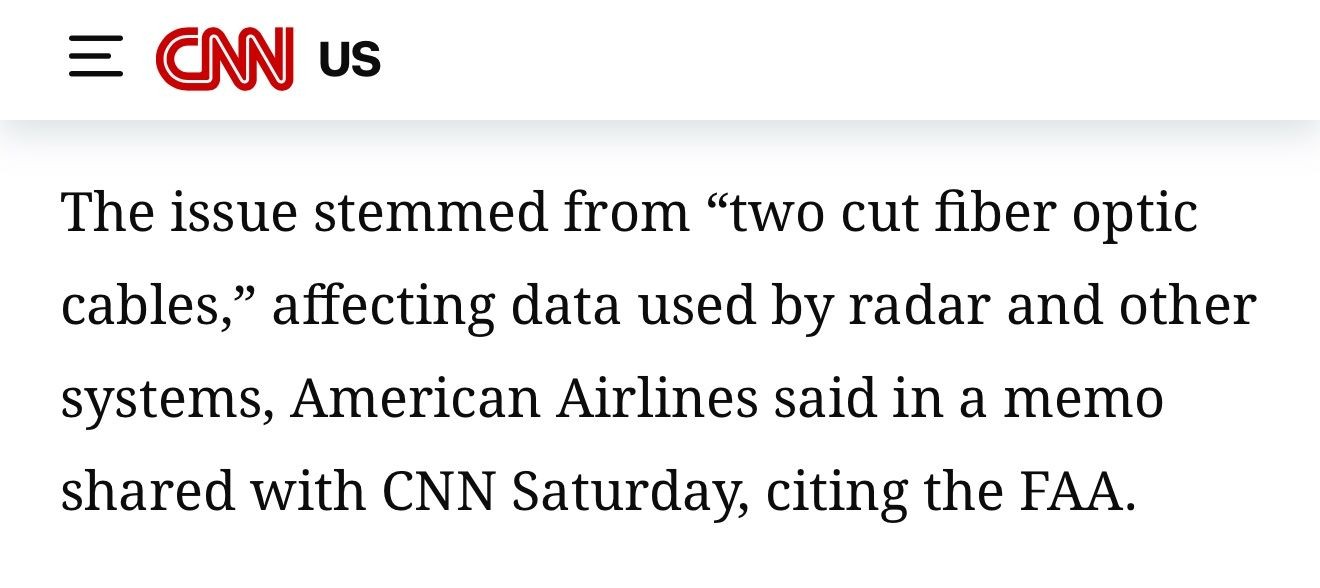Feeling the Impact of Societal Cost of Damage to Buried Utilities
Print this Article | Send to Colleague
Mike Sullivan, President, Utility Safety Partners
I arrived at the Dallas Fort Worth airport early for my direct flight to Calgary. It had been a long but rewarding week at the ACTS Now Global Excavation Safety Conference, and I was anxious to get home. I found it strange that there was a long line-up of people waiting to speak with an American Airlines agent but my flight was still “On Time” and I didn’t think much more of it – at least not until I overheard someone mention flight delays and cancellations. I looked at my e-ticket and my flight was still On Time but the display board announcing all flights was lit up in red with “DELAYED” and “CANCELLED” flights – and it wasn’t just American Airlines, it was all airlines.
What the heck was going on?
When most people think of construction risk, they picture broken equipment or project delays—not airports grinding to a halt or global supply chains stalling. Yet that’s exactly what happened on September 18, 2025, when a damaged fiber optic cable knocked out aviation radar systems and shut down Dallas Fort Worth International Airport (DFW) and Dallas Love Field (DAL). And I experienced it firsthand.
This was not a cyberattack. Not a storm. Not terrorism. It was an underground utility strike—a preventable one. One cut cable. 1,800 flights affected. $76.9 million in estimated societal costs—in a single day.
Buried beneath our feet is a vast web of essential infrastructure: telecommunications networks, natural gas pipelines, electrical conduits, water and sewer mains. We rely on this network every second of our lives, but we rarely think about it—until something goes wrong. And it goes wrong far more often than most people realize. In North America, a buried utility is damaged every few minutes, totalling over half a million strikes every year. These incidents are often dismissed as minor construction setbacks. In reality, they can escalate into major public safety, economic, and national security events.
The Dallas aviation shutdown proved that buried infrastructure isn’t just about connectivity—it’s about continuity of society.
The Dallas event gives us a real-world look at the true cost of utility damage—not just to infrastructure owners, but to society as a whole.
| Impact Category | Estimated Cost |
| Passenger time lost | $36.7 million |
| Airline operational costs | $15.6 million |
| Missed connections & business impacts | $23.4 million |
| Environmental cost from delays | $1.2 million |
| Total Estimated Sociectal Cost | ~$76.9 million |
And that doesn’t include the strain on emergency management systems, disruption to medical supply routes, security complications from grounded aircraft, and loss of commerce and workforce productivity across multiple sectors. These are catastrophic ripple effects—all originating from a preventable excavation incident.
In Dallas, it wasn’t the company responsible for the strike that paid the largest price—it was the businesses that lost productivity and shipping timelines, airlines that faced cascading schedule failures, communities affected by service interruptions, and the human cost - the passengers who lost time, rebooked flights, and missed work or family events. In fact, a young woman standing in line a few people behind me was absolutely inconsolable as she realized she wouldn’t make it home in time to say goodbye to her dying mother. Her situation reminded me of my own sister who struggled to make it to Calgary two years ago just in time to say goodbye to our own mom who suddenly took ill. The gut-wrenching despair and helpless pain that young woman was experiencing would never truly heal.
The worst part is, I have no doubt the incident – the cut fiber lines – was preventable. I’ve been around this business a very long time and I have yet to encounter an incident that wasn’t.
Submitting a locate request isn’t a decision whether “to do” or “not do”. It’s a procedure and it sets in motion a series of related procedures designed to keep you, your family, and your community safe. In the same way that an airline pilot runs through the pre-flight checklist, so should every person responsible for an excavation project.
Underground utility damage isn’t a construction inconvenience—it’s a threat to public safety, the economy, and essential services. The Dallas fiber cut wasn’t an anomaly—it was a warning.
Damage prevention must evolve from compliance checkbox to critical infrastructure protection strategy, because what lies underground supports everything above it. 

